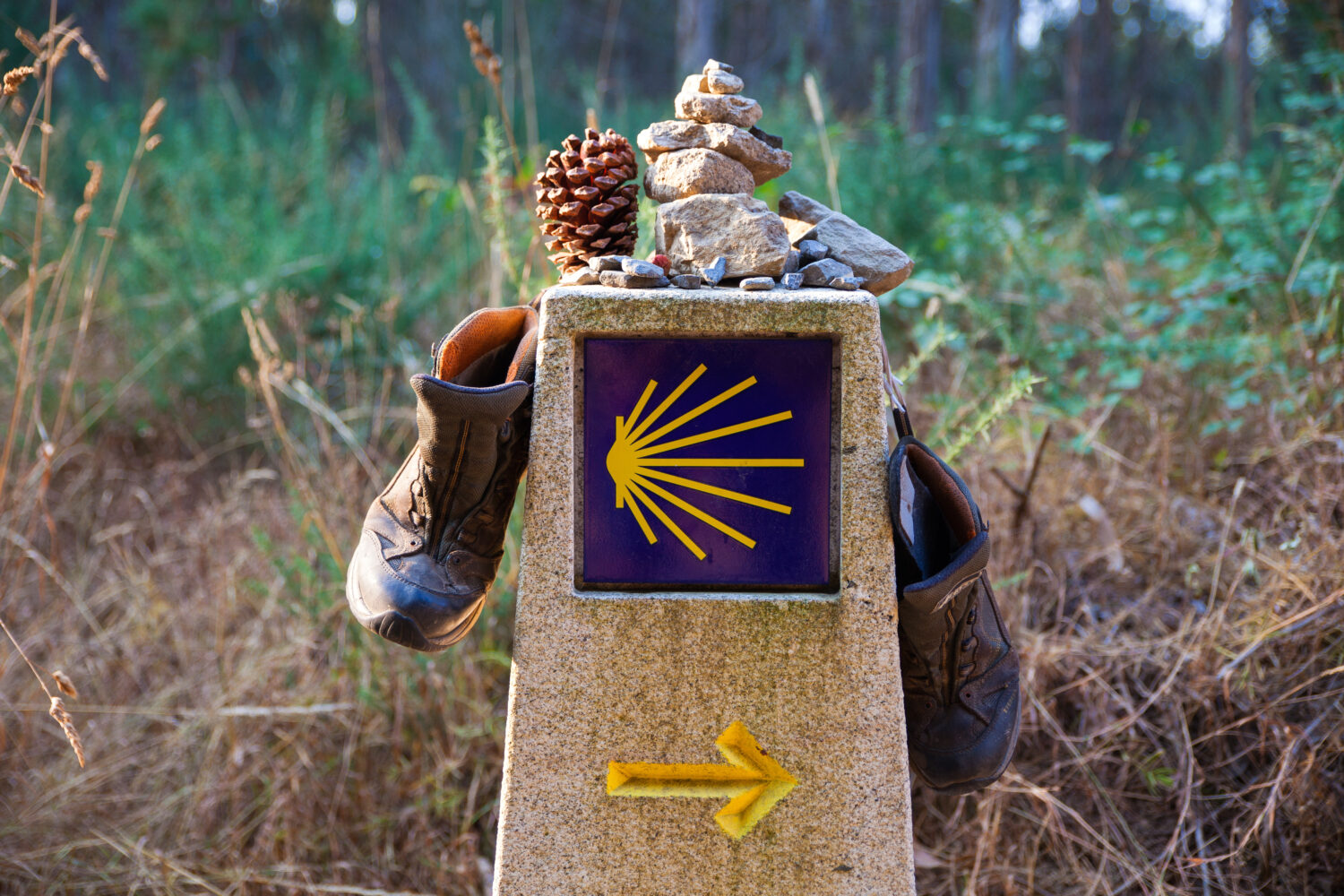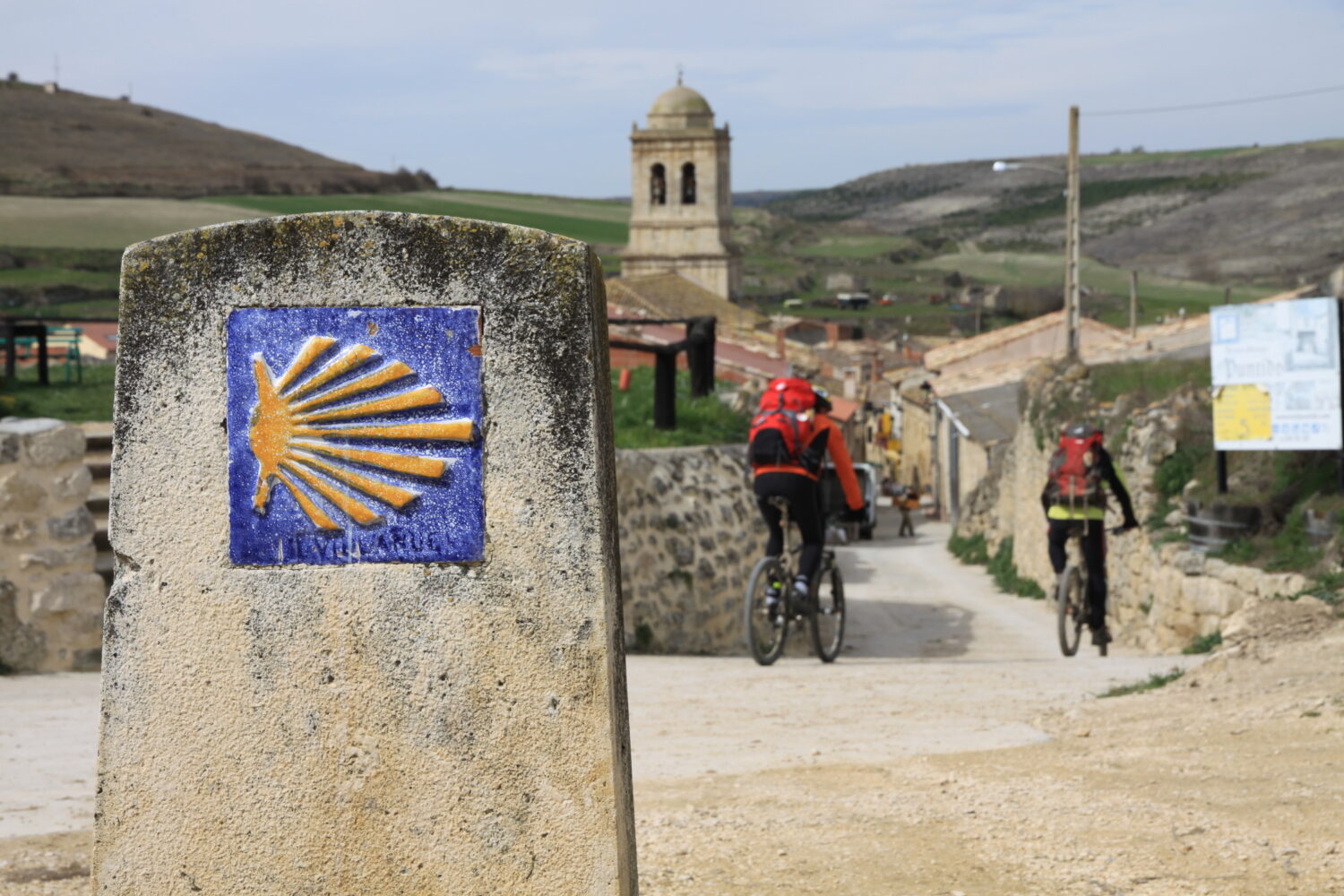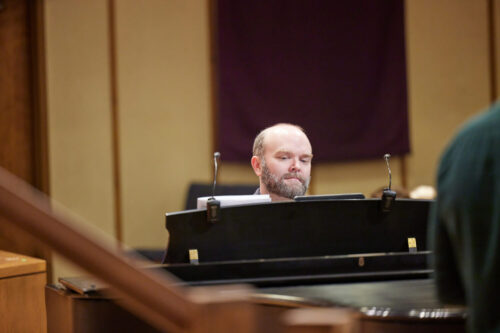Associate pastor will make a pilgrimage on the Camino de Santiago
Jon Wasson’s sabbatical will kick off with an adventure. He is making a pilgrimage, a 300-mile gravel bike trek on the Camino de Santiago. “The Way of St. James” is an ancient path through most of northern Spain, and parts of Portugal and France. It dates back to the 9th century. Pilgrims from all over the world come for the physical and spiritual challenge. The trail is often described as “an experience of radical exposure, where one is left with enough time to examine their motivations, longings and deepest-held beliefs.”
“I don’t know if I’m prepared,” Jon said.
Jon fears his training may be inadequate. (“I haven’t biked 50 miles once. Now I’ll do it every day for six days.”) He will also face the logistical challenges of getting his bike to Madrid and then to the start of the trail.
More importantly, Jon is unsure of what to expect on the spiritual side of the journey. “Pilgrimage is a beautiful metaphor, a period when you expose yourself to limits,” he said. “I have no idea what I’m going to encounter. I’ll have to give up control.”
Six days alone on the trail will afford Jon the space and the solitude to begin to reflect on his eight years of ministry at Covenant. “Every pastor runs the risk of their faith becoming a kind of spiritual performance. My hope is that this exposure will deepen my personal faith and provide an experience that I will be able to reflect on for years to come.”

What is a Sabbatical?
A sabbatical, as defined by the PC(USA), is a set time for one to disengage from the regular and normal tasks of vocational ministry, allowing for a new perspective on faith, calling and mission. It is an opportunity for rest, reflection and renewal that seeks to improve the effectiveness and well-being of church leadership – and ultimately of the church. The sabbatical serves the congregation as well as the pastor by offering new opportunities for the congregation to grow and serve.
Covenant’s other pastors have all recently taken sabbaticals and all felt closer to God and renewed in their faith upon their returns. Thomas and Beth Daniel took sabbaticals last summer, and Jill Williams had a sabbatical in 2019.
Like his Covenant colleagues, Jon has carefully planned his time away from Covenant, which begins on May 1. The Camino de Santiago offers time for renewal and reflection. Jon’s rest will come later; he has plans to spend more time alone, and with friends and family.
With two young boys and his wife Abby in Austin, having the right mix of activities and interaction is a goal. “Part of the challenge and hope of this sabbatical is to balance time away from and time with others,” he said.
Times alone will include the pilgrimage, a residence at Laity Lodge and days spent running, cycling and reading. Time with others will include two family trips and extended breaks at his in-laws’ lake house, as well as time with his spiritual director.
“Laity has always been a place for my soul to be free. it will be a different kind of solitude,” he said. “It will be safer and more comfortable (than the week on the Camino de Santiago).”
Throughout his sabbatical, Jon will work closely with a spiritual director. Kara Root, a pastor at Lake Nokomis Presbyterian Church in Minneapolis, has a special interest in the sabbath and regularly leads retreats and workshops on rest, prayer, church leadership and transformation.
When Jon met Kara two years ago, he was impressed with her pastoral wisdom and theological instincts. That, coupled with her work on the sabbath and rest made her a perfect fit as Jon’s spiritual director.

What Rock Will Jon Leave at the Cross?
A key stop on the Camino de Santiago is the Cruz de Faro, the iron cross. “The cross itself isn’t that spectacular,” Jon said in his Good Friday sermon. “It’s a small iron cross sitting atop a tall wooden pole.”
However, stones surrounding the base of the cross symbolize the burdens other pilgrims have left there. “Many pilgrims write messages on their stones, messages that recount stories of tragedy or suffering back home. Often, it is these stories that have prompted the pilgrimage itself,” Jon said.
By leaving the stone at the foot of the cross, pilgrims find relief from the physical weight and the burden this stone has come to symbolize.
“I’ve been thinking about what stone I will take with me – both the actual stone that I will lug across the world and also what that stone will symbolize for me,” Jon said.
The first part is easy. Jon thinks he’ll take Texas limestone.
The second is harder. “What do I need to leave at the foot of the cross? What burden have I been carrying that I need to let Jesus have?”
As he said in his Good Friday Sermon, we don’t need to travel across the world to lay down our stones. He will have until August 1 to rest and reflect, focus on renewal, and figure out what he’ll leave at the cross. “I will reflect on the past eight years of vocational ministry and discern what unique contribution of gifts I might offer Christ’s church in the next chapter of my ministry.”




